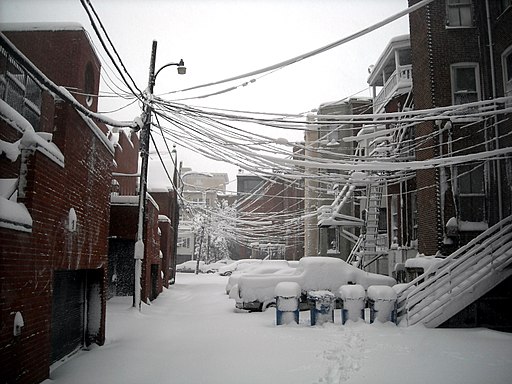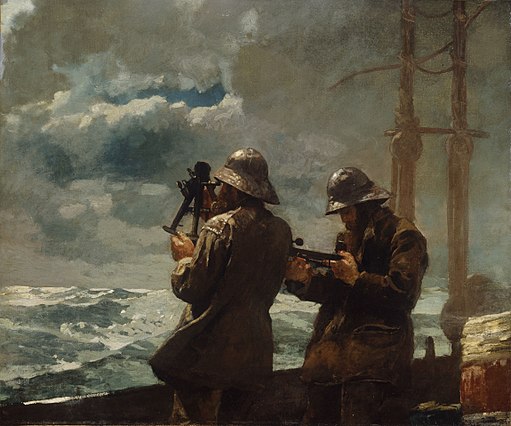Powering Down
A strong nor’easter – or northeaster, if you prefer – is causing havoc along the east coast from North Carolina to Maine and into Canada to kick off the first weekend of March 2018. Nor’easters typically occur in the colder months, almost always in the eastern third of the country, though occasionally slightly farther west, as in November 1975 when a storm whipped up Lake Superior, sinking the SS Edmund Fitzgerald, and they can be as destructive as hurricanes when taking into account the wider swath and longer duration of a nor’easter over a hurricane. Blizzards with heavy snowfall, downpours and consequent flooding, beach erosion, and power outages and damage to houses, businesses, and infrastructure from gale force winds, all can be attributed to nor’easters.
The winds of a nor’easter never reach the highest speeds of hurricanes, but even 30 and 40 mile per hour winds in winter can cause trees and tree limbs to topple onto overhead power lines. The ground does not dry out as quickly in winter as in summer, and that can make the difference between a tree staying upright in high winds or falling over. Add the weight of snow and sometimes ice, and not only tree limbs and trees fall, but even utility poles may snap off at ground level. It’s not uncommon then to hear reports during a strong nor’easter, such as the one currently blowing along the upper east coast, of millions of utility customers being without power, sometimes for days.
After every particularly bad storm that causes massive power outages, many people want to know why in this country most of the power lines are still above ground, where they are vulnerable to storm damage. They want to know why more of the lines aren’t buried, seemingly out of harm’s way. The blizzard of 1888 brought New York City to a standstill, and the effect was that city leaders made a determination afterward to start placing essential services underground, in particular building a subway system to help city inhabitants keep moving no matter what the weather. Putting in new facilities at a time when the city was still in the process of being built out to its full potential turned out to be not as disruptive and expensive as it would be today, now that every square mile of Manhattan real estate has something already built on it.

An alley behind Connecticut Avenue, N.W., in the Dupont Circle neighborhood of Washington, D.C., with power lines weighed down by heavy, wet snow from the blizzard of February 2010. Photo by AgnosticPreachersKid.
Developers building new upper middle class subdivisions sometimes put the power lines underground because those developments can absorb the extra cost, typically 10 times more than overhead lines, and because the pleasing aesthetics and perceived security of underground lines enhance property values. There are drawbacks, often overlooked, such as the vulnerability of any overhead lines feeding into the new development, and the increased time and expense for power company crews to locate and fix compromised underground lines. One of the ways an underground power line can become compromised is through flooding, in which water or even water vapor will find its way into any vulnerability in the line’s sheathing and short out the line. Lines are usually buried from 24 to 48 inches deep, which in most cases is deep enough to insulate them from digging accidents and the soil water pressure of ordinary rainfall. In floods, however, the soil can become so waterlogged that pressure builds high enough to force its way in toward the power line.
There is no one absolute answer to lessening the risk of losing power during a storm, other than to disengage from the power grid entirely. For those who remain hooked in to the grid, some peace of mind can be had by purchasing a portable generator or installing a standby generator. Power companies should put more of this country’s grid underground in spots where the benefits can be greatest, leaving the rest of it above ground where the costs are prohibitive. Utility customers may wail once again about all the damaged above ground lines once this latest nor’easter has moved on out to the open ocean, but they often quiet down once they hear how much their power bill would have to be hiked and for how long in order to pay for putting the service below ground. The people who have it worst in some ways during a storm and for days or weeks afterward are the power company workers who have to be outside in dreadful conditions doing what is a dangerous job even in sunny, balmy weather, and is many times worse in soaking rain, blowing snow, pelting ice, and winds that could throw anyone off course.
— Vita
— Vita


